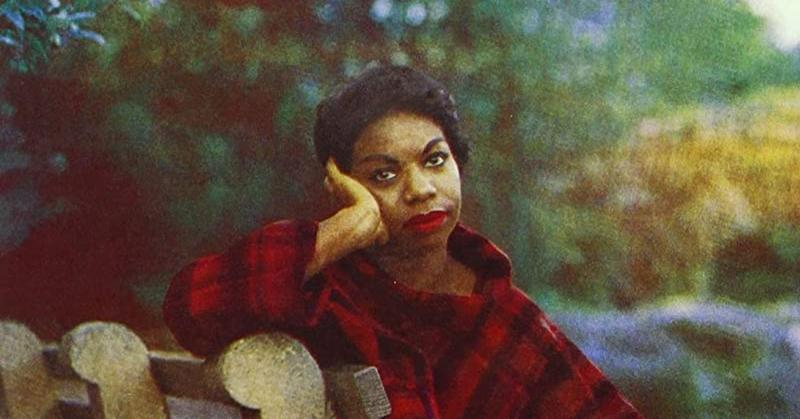Nina Simone: Jazz Singer's Biography & Things You Didn't Know
By | February 20, 2021

Courageous and complicated, Nina Simone remains an artist whose work begs to be pored over and inspected. She may be famous for her performance of "I Loves You, Porgy," but her life is so much more interesting than one song.
Nina Simone's Early Life
Nina Simone began her life as someone else. In 1933, Eunice Kathleen Waymon was born the sixth of eight children to a poor family in Tyron, North Carolina. She was only a few years old when she began playing piano, and by the time she was 12, she was playing at her local church and giving classical recitals. One of her earliest memories of mixing musical performance with her strict moral code occurred when her parents were asked to move from the front row of the venue where she was performing to make way for a group of white people. Simone stopped playing until her parents were allowed to return to their seats.
With the help of donations from her community, Simone enrolled in the Juilliard School of Music in New York City to prepare for an audition for the Curtis Institute of Music in Philadelphia, but although she insisted that she played flawlessly, she was denied admission. Simone's entire family had relocated to Philadelphia in anticipation of her acceptance to Curtis, so rather than pack up and move back to North Carolina, the young pianist began taking private lessons with Curtis professor Vladimir Sokoloff in 1954. To pay for her time with Sokoloff, she performed at the Midtown Bar & Grill in Atlantic City, New Jersey, adopting the moniker of Nina Simone so her family wouldn't find out she was playing "the devil's music."

Little Girl Blue
In 1958, Simone was still playing in small clubs when she recorded a version of Gershwin's "I Loves You, Porgy" from the modern opera Porgy And Bess. The recording, which she only did as a favor for a friend, became her only song to crack the Billboard Top 20 in the United States. One year later, Bethlehem Records released her debut album, Little Girl Blue. Simone needed money, so she sold the publishing rights for the album for $3,000, costing her $1 million in future royalties. Following the release of Little Girl Blue, she hopped over to Colpix Records, where she didn't make a lot of money but regained control over the material she recorded.
Simone funneled what little money she had into her twin passions of classical music and political activism. Although she was initially reluctant to record what she described derisively as "protest music," a domestic terror attack on a black church in Birmingham, Alabama in 1963 changed her mind. She wrote the song "Mississippi Goddam" in response to the bombing of the 16th Street Baptist Church, explaining that it came to her "in a rush of fury, hatred and determination." From that point forward, "I stopped singing love songs and started singing protest songs because protest songs were needed," in addition to speaking and performing at Civil Rights rallies.

Internationally Troubled
In 1970, the politically disillusioned Simone fled with her young daughter to Barbados, returning briefly to the U.S. only to discover she was wanted for refusing to pay taxes in protest of the country's involvement in the Vietnam War. Four years later, she accepted the invitation of singer and friend Miriam Makeba to join her in Liberia, hoping that "maybe I could find some peace there, or a husband." She performed, partied, and taught piano lessons while living in a house on Congo Beach.
By 1977, however, the stage and the recording studio were calling. Simone enrolled her daughter in a Swiss boarding school and bounced around Europe until she ended up in London, performing at Ronnie Scott's Jazz Club, where she recorded the album Live At Ronnie Scott's in 1984. These performances were mercurial at best, as Simone's mental health began deteriorating to the point that she was institutionalized in 1987. Her next move was to the Netherlands, where she continued to struggle with what was by then diagnosed as bipolar disorder even as her star rose, thanks to an international ad for Chanel featuring her 1959 recording of "My Baby Just Cares For Me."
In 1993, she moved to the South of France, where she set her house on fire and shot a teenage boy in the leg before returning briefly to the States for a series of final shows. Passionate to the end, these last engagements were characterized by frequent tirades about the presidency of George W. Bush. On April 21, 2003, Simone passed away in her sleep at her home in France from complications of breast cancer. Her ashes were scattered across Africa.

